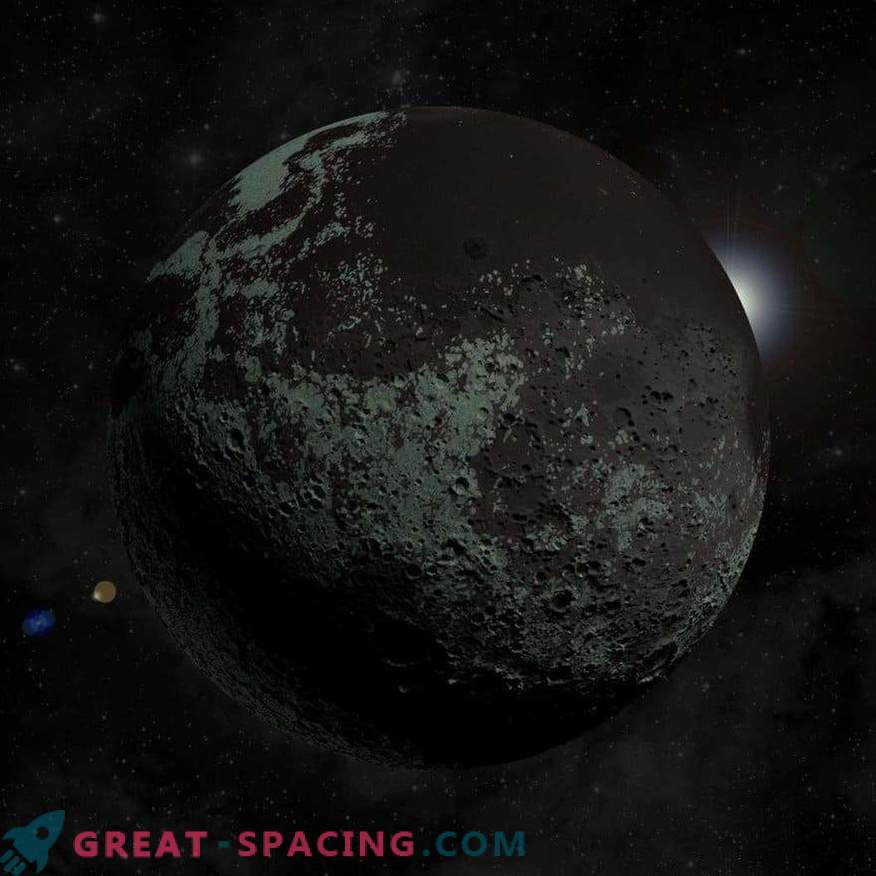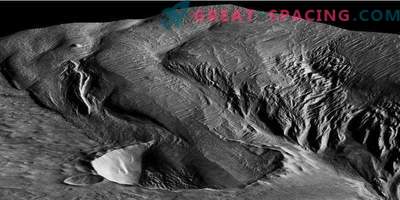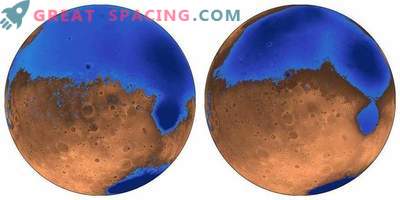
Perhaps when the Red Planet cooled and hardened, it was shrouded in a thick and vaporous atmosphere. Such a bath could form clay deposits.
Researchers from Brown University have put forward a new scenario for the formation of ancient clay-like Martian minerals, which may change the early history of the Red Planet.
There are thousands of ancient phyllosilicate outcrops on the Martian surface. Clay is created by the contact of water and volcanic rock. Because of this, many suspect that at some point in Martian history there should have been stable surface water, groundwater, or active hydrothermal systems. However, a new study suggests that clay appeared during the creation of the planetary crust, that is, long before water began to flow around the planet.
The scenario was developed on the basis of laboratory experiments and computer models. In the early solar system, rocky planets were covered in molten magma oceans. As they cooled and hardened, water and other volatile substances degassed on the surface, forming a dense and vaporous atmospheric layer. Moisture and heat from such a high-pressure steam bath transformed the hardened surface into clay. The non-uniform distribution can be explained by the subsequent meteoric attack and volcanic activity. This scenario does not need a warm and humid climate or a stable hydrothermal system in ancient Mars. Modern models say that in times of Martian adolescence, the temperature mark rarely rose above 0.
Of course, there are variants with surface weathering and other types of changes, but only this scenario most plausibly explains the wide distribution of clay across the planet.
To demonstrate the credibility of the mechanism, scientists synthesized samples of rocks corresponding in composition to the Martian basalt. Then they used a high pressure device to simulate the required temperature and pressure. Two weeks later, they checked the extent of the change. It turned out that it is significant.

An artistic representation of how Mars could look after formation: clay-rich landscapes (green and turquoise) mixed with basalt clusters and molten stones (brown and black)
The vaporous atmosphere could persist 10 million years and more. This was enough to create 3 km of clay. To understand how this layer of clay evolved, it was necessary to create a special model and look at the development for a billion years ahead. Soon the transformation and the approach to the modern view became noticeable. Laboratory experiments cannot 100% confirm this option, but they put forward a strong hypothesis that can be tested in future missions. It is only necessary to deliver the necessary samples to Earth.
If this scenario is correct, then extensive clay deposits can still remain under the surface. These deposits are capable of explaining why the density of the Martian crust is less than expected for basalt. It is also important that the sediments are able to serve as groundwater storage. Theory hope to confirm with the launch of the rover Mars 2020.











































